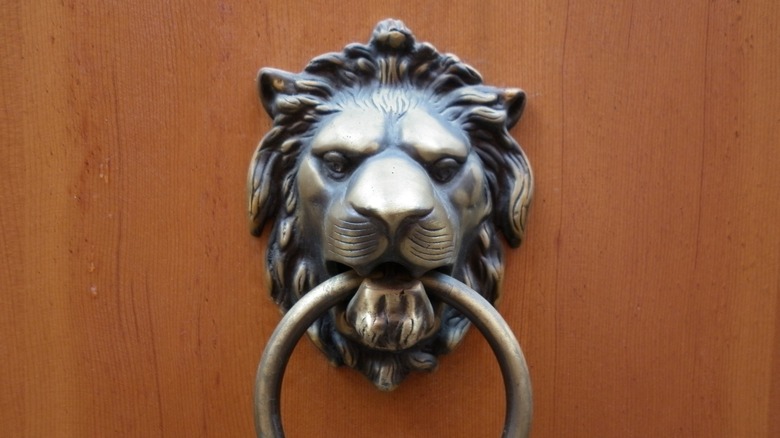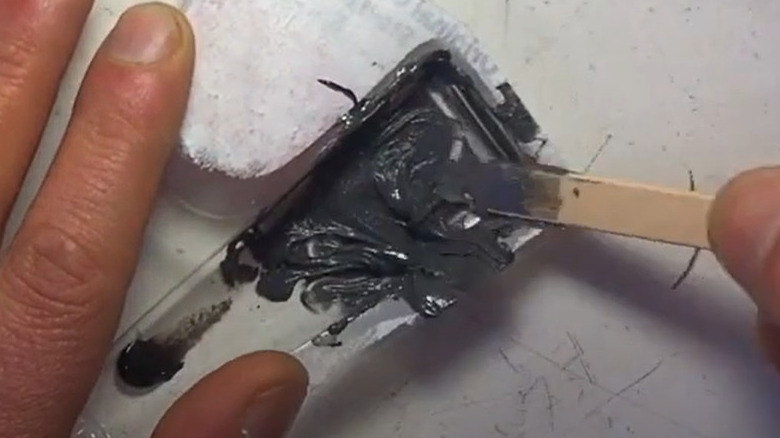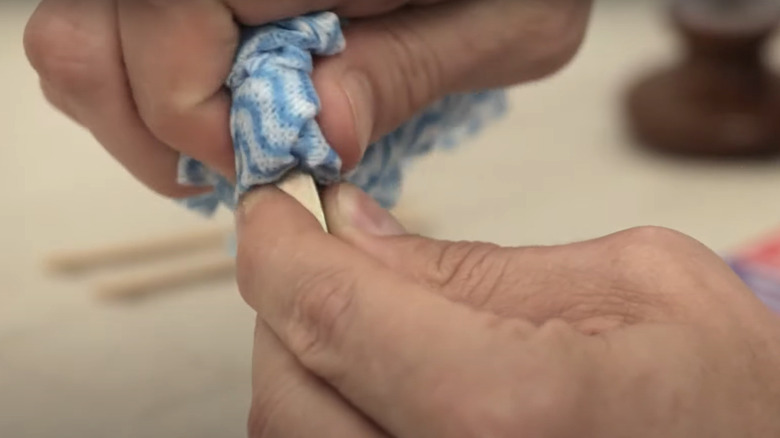The Best Glue For Bonding Metal To Wood
Affixing metal parts to wooden surfaces is a pain when drilling nails is not an option. Naturally, adhesives are the next go-to, but ensuring a secure metal-wood connection can be tricky. Unless lacquered, wood is fairly porous and easily laps up glue, unlike metal, which has a high density. For the adhesive to work, it must be compatible with both surfaces while lending the necessary tactile strength. While plenty wax lyrical about polyurethane-based glues and cyanoacrylate adhesives, the best glue for metal-to-wood connection is a two-part epoxy.
Epoxies offer exceptional bonding strength, outlasting their competitors by miles, although they take their sweet time for setting and curing. Although their counterparts, like superglues, do well with smaller metal pieces, they aren't much help if the concerned item experiences heavy usage or pull force (like door hinges). Moreover, epoxy resins double as putties and can be used to fill in and harden spaces where necessary, regardless of the angle.
The best epoxy options
YouTuber Alex Kenis conducted a quick experiment with four glues to test how long wooden pieces remain attached to aluminum. While cyanoacrylate adhesives (superglues) performed abysmally, J-B Weld and Gorilla glues kept the metal-wood pieces locked in. However, when the YouTuber amped up the pressure by putting the joined pieces in a vice and working on them with pliers, J-B Weld's epoxy came out stronger, with a part of the wood still attached. On the flip side, the separation was cleaner for Gorilla, although he used its glue version — rather than epoxy — to complete his experiment.
Arguably, J-B Weld's two-part epoxy and Gorilla epoxy (both available for under $7 and $8, respectively, on Home Depot) are strong contenders that offer excellent adherence. However, if you're pressed for time, Gorilla might work better since it takes under five minutes of setting time compared to over four to six hours for its competition. Also, J-B Weld's epoxy dries to a dark gray, and while you can paint it over later, you might prefer the crystal clear dry of Gorilla. That being said, Weld's offering withstands temperatures up to 550 degrees Fahrenheit, whereas its rival is only good up to 180 degrees Fahrenheit.
Tips for gluing metal to wood
To bond wood and metal together, you must ensure both surfaces are clean. Simply put, if you're using an old metal piece, scrub it down with a wire brush to clean up rust. You may use sandpaper, too, if the need arises. Next, wipe the metal down with a damp cloth to remove any dust and grease, followed by a quick rub with a dry cloth. Treat used pieces of metal with denatured alcohol in case they contain excessive oil. If you're using a new metal object, keep the connecting area unfinished and scrape it with 120-grit sandpaper. This will allow the epoxy to get a better grip on the metal.
Similarly, using a brush, give the wood a quick wipe-down to remove any loose dust and debris. For stubborn stains, use a damp cloth. Ideally, you can sand the wood, too, as rougher surfaces are better glue absorbents (if the wood is flaky, skip the sanding). After cleaning the surfaces, don safety gear (at least nitrile gloves and eye protection) to prepare the epoxy — accidental contact can cause skin irritation. Follow the label instructions to the T while mixing and spreading the resins. Don't forget to clamp the pieces together while the epoxy cures or they won't adhere to each other.


